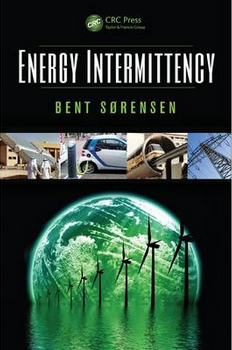
Energy Intermittency
[BOOK DESCRIPTION]
The first book to consider intermittency as a key point of an energy system, Energy Intermittency describes different levels of variability for traditional and renewable energy sources, presenting detailed solutions for handling energy intermittency through trade, collaboration, demand management, and active energy storage. Addressing energy supply intermittency systematically, this practical text: * Analyzes typical time-distributions and intervals between episodes of demand-supply mismatch and explores their dependence on system layouts and energy source characteristics * Simulates scenarios regarding resource time-flow, energy conversion devices, and demand structure to assist in evaluating the technical viability of the proposed solutions * Discusses the conditions for establishing such systems in terms of economic requirements and regulatory measures In one concise and convenient volume, Energy Intermittency provides a comprehensive overview of all the causes and remedies of energy supply intermittency.
[TABLE OF CONTENTS]
Preface xi
About the Author xiii
Chapter 1 Introduction 1 (4)
Chapter 2 Intermittency Dependence on Type 5 (8)
of Energy System
References 12 (1)
Chapter 3 Timescales Relevant for the 13 (28)
Intermittency of Individual Energy Sources
References 38 (3)
Chapter 4 Using Case Studies to Explore the 41 (44)
Options
4.1 A North American Reference Study 48 (37)
4.1.1 Contiguous United States 49 (13)
4.1.2 High-Demand Alternative Scenario 62 (3)
for the Contiguous United States
4.1.3 Canada 65 (5)
4.1.4 Alaska and Greenland 70 (4)
4.1.5 Mexico 74 (3)
4.1.6 Mexico with Doubled Electricity 77 (3)
Demand
References 80 (5)
Part I Cooperation across Areas and Regions
Chapter 5 Power-Line Interchange 85 (32)
5.1 Present Use of Grid Interconnections 85 (16)
and Near-Term Expectations
5.2 Impacts Associated with Limited 101 (2)
Transfer Capacity
5.3 Advanced Use of Power Exchange for 103 (14)
Handling Intermittency
5.3.1 A High-Transmission Scenario for 108 (4)
North America
References 112 (5)
Chapter 6 Pipeline Interchange 117 (6)
References 122 (1)
Chapter 7 Other Trade Options 123 (8)
References 128 (3)
Part II Energy Storage
Chapter 8 System-Integrated Storage 131 (6)
References 135 (2)
Chapter 9 Storage in Dedicated Facilities 137 (16)
9.1 Storage of Low-Quality Energy 137 (6)
9.2 Storage of High-Quality Energy 143 (10)
References 150 (3)
Chapter 10 Decentralized Storage 153 (12)
References 160 (5)
Part III Managing Load Matching
Chapter 11 Load Management 165 (10)
References 173 (2)
Chapter 12 Using Grids to Transmit 175 (20)
Information
References 187 (8)
Part IV Transitions and Cost
Chapter 13 Systemic Transitions 195 (40)
13.1 A Japanese Renewable Energy Future 211 (10)
13.2 A Korean Renewable Energy Future 221 (5)
13.3 A Chinese Renewable Energy Future 226 (6)
13.4 Conclusion 232 (3)
References 233 (2)
Chapter 14 Final Remarks 235 (14)
References 246 (3)
Appendix: Units and Conversion Factors 249 (4)
Index 253

 新书报道
新书报道